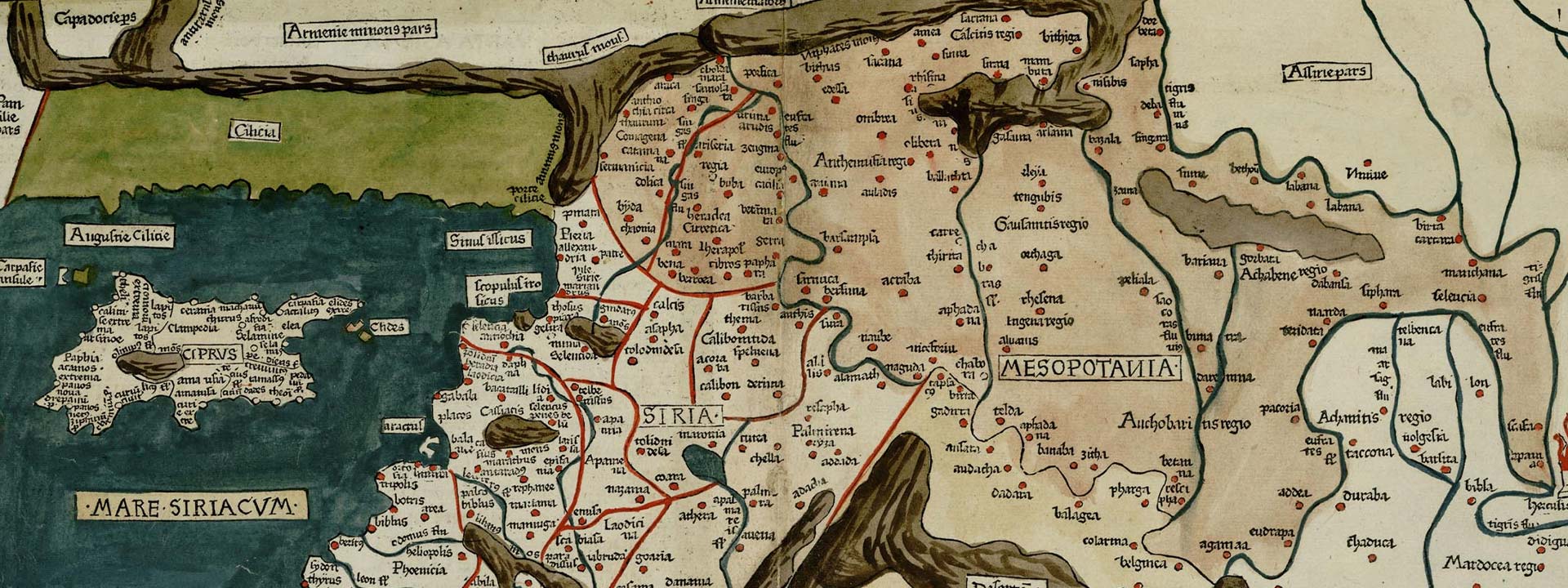The Middle East at the National Library of Israel
The Middle East is a geographical area that extends from Turkey in the west to Iran in the east and in the south includes the Arabian Peninsula and Egypt. Broader definitions also include North Africa (the Maghreb) and Sudan in the west, the region between Iran and India in the east and even parts of Central Asia. Having gradually replaced the previous term “Near East” in Western terminology, the term “Middle East,” has been in common use since the 20th century. Despite its Eurocentric nature, even the region’s inhabitants now use it.
The Middle East is considered the cradle of civilization, in which developed the civilizations of Egypt and Mesopotamia, which form the core of most of the Old World civilizations. Moreover, the first known alphabet system began in this area, as did the concept of monotheism, which has spread to much of the world over the years. The three major monotheistic religions—Judaism, Christianity, and Islam—emerged in the Middle East, and it is home to their holiest sites. While the Jewish people always constituted a minority in the population of the Middle East, it greatly influenced the development of the two other monotheistic religions that have shaped the region over the last two millenniums.
The region has been of great geopolitical importance for thousands of years, especially the Fertile Crescent, which was fruitful ground for the development of complex cultures and powerful political entities. As the region that connects Asia, Africa and Europe, major trade routes flourished in the Middle East throughout history, which made it a juncture not only for the exchange of goods, but also for intercultural exchange. For thousands of years the region was subject to the hegemony of a number of cultural centers, with Persian culture from the east and Hellenistic culture from the west dominating it from the fourth century BCE to the beginning of the seventh century CE. Under the rule of the Byzantine Empire, Christianity became the central religion in the Western Middle East, while in Persia Zoroastrianism was the religion of the state and of many of its inhabitants.
The emergence of Islam in the early seventh century and the great conquests of the Prophet Muhammad’s descendants led to the collapse of the Sassanid Empire that ruled Iran and pushed back the Byzantine Empire to the region of Anatolia. From then on, various Islamic authorities have governed most of the Middle East, and over the centuries, the process of Islamization of the population deepened, until the vast majority adopted the religion of Islam. The Middle East, and especially Mesopotamia, formed the heart of Islamic civilization, and was ruled for over a thousand years by a series of Islamic empires based in various centers.
In modern times the Middle East has experienced sweeping changes, including the growing influence of the West; the establishment of the State of Israel; and discoveries of rich oil deposits, especially in the Persian Gulf region and the Arabian Peninsula. These developments revived the region’s ancient geopolitical importance, making it a center of interest in the international arena into the 21st century.
Today, most residents of the Middle East are Muslims, with Christian minority communities scattered throughout the region, and the vast majority of Jews concentrated in Israel. Ethnically and linguistically, the three main populations are Arabs (the largest group, making up the majority of the population from Iraq in the east to Morocco in the west and Yemen in the south), Persians (in Iran and neighboring countries) and the Turkish peoples (in Turkey and Central Asia). Among the many minorities in the Middle East are Kurds, Armenians, Samaritans and Druze.
The Middle East, with its diversity of cultures, is one of the National Library of Israel’s core subjects and its collections contain an enormous variety of treasures pertaining to the region’s history, religion and culture. From ancient maps to rare manuscripts in various languages, to modern press databases, archives, posters and music collections, the National Library has placed documentation and research of the Middle East at the forefront of its activity. Alongside rare materials, many of which are accessible through the Library’s website, it holds millions of books and premier research literature in the field of Middle East studies.

